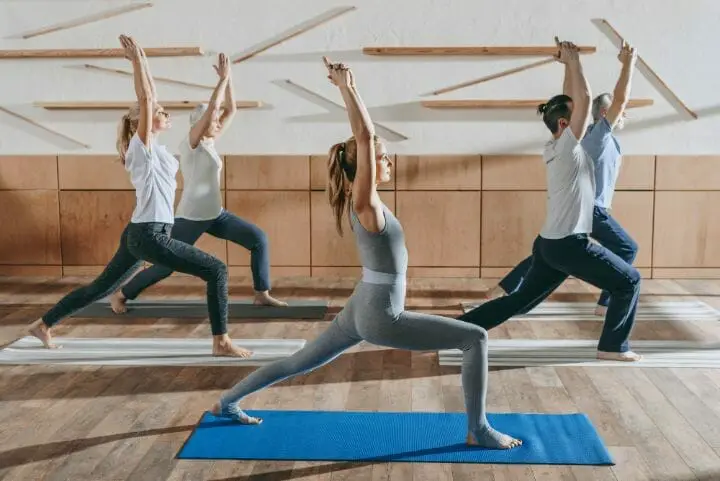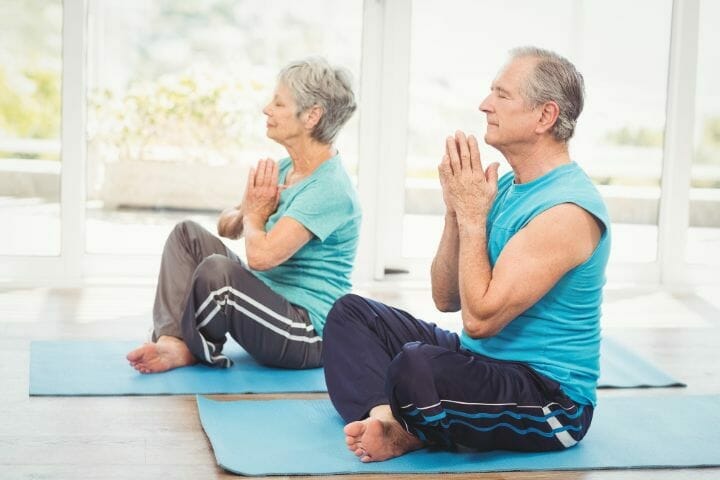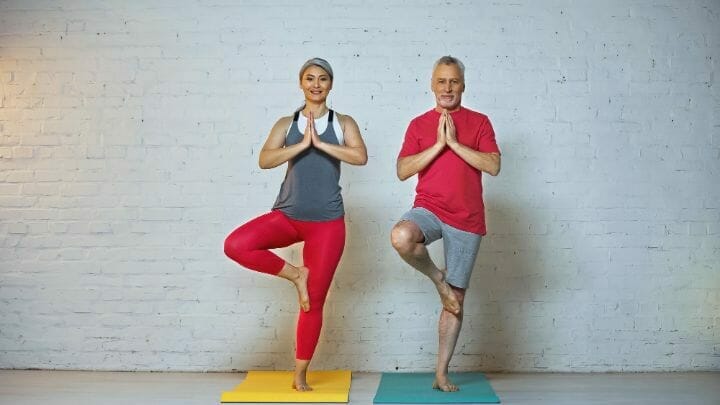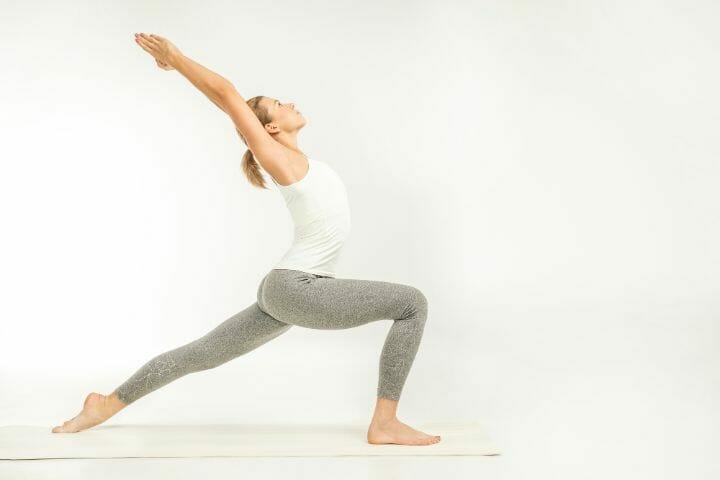Knee replacement surgery is common today, with older adults and even younger people undergoing this painful procedure.
As per the Arthritis Foundation, 54 million Americans have arthritis, the leading cause for knee replacement, with about 700,000 knee replacement surgeries performed each year.
Owing to medical advancements and proper postoperative care, people today experience a complete recovery. And yoga certainly proves to be a beneficial tool in the rehabilitation process.
Read on to know the benefits of yoga, breathing exercises, and meditation. Understand how these yogic asanas improve focus, increased mobility, and strength after a knee replacement surgery.
Contents
Benefits of Doing Yoga After The Knee Replacement Surgery
Yoga helps minimize and often eliminates poor postural habits, seen before the surgery, that could contribute to your knee problems. It also enhances the range of motion and strengthens the muscles around the knee joint.
The main aim of practicing yoga after the knee replacement surgery is to straighten and bend the leg at an effective range of motion so that you can regain your independence for better mobility and go about your daily life normally.
Making yoga a part of your regular life has many benefits. It works beautifully for those who have undergone a knee replacement because it incorporates physical exercises, breathing techniques, and even meditation.
When put together, it helps heal both the mind and body. Yoga has many medical and health benefits, along with bringing peace and mindfulness to your life. Let’s examine all that you can gain from this holistic form of workout.
You may also like our article on chairs to use after knee replacement
1. Physical Benefits
Hip and knee flexor muscles develop tightness because of inactivity caused due to osteoarthritis, which is the main cause of knee replacement.

Yogic postures help to reduce muscle stiffness and regain strength in the muscles around the knee joint. In general, yoga helps to enhance strength, flexibility and relieves stress. It also:
- Helps to improve body balance
- Tones and strengthens the muscles around the knee joint.
- Makes you lose weight, which is another worrying factor for recovery after knee replacement.
- Reduces inflammation around the knee, which is an expected fallout after knee replacement surgery
- Alleviates relieve muscle pain
- Stimulates the blood circulation
- Enhances posture and body alignment. Extreme knee joint pain before the surgery might lead you to limp, resulting in poor posture but with asanas, you can correct this.
2. Mental Benefits
Besides strengthening the muscles around the knee joint, yoga is excellent for mental well-being too. It has been observed that people who have undergone knee replacement surgery often get into a depressive state of mind due to a lack of mobility and pain in the initial few weeks.
Simple breathing techniques and meditation, an integral part of a yoga routine, can help deal with mental and emotional turmoil. Many breathing exercises, known as Pranayam, are taught to patients with knee replacements to calm the mind and improve concentration.
These are usually done before and after the yoga postures or asanas are complete. The simple breathing techniques help:
- Relax the mind
- Reduce anxiety
- Enhance focus and concentration
- Improve mindfulness
You may also like Best Ice Packs for Knee Replacement Surgery
Special Considerations While Practicing Yoga After The Knee Replacement Surgery
Knee replacement is a major surgery that requires proper post-operative care. Yoga proves to be extremely beneficial in the healing process, but you need to take ample care.

1. Like for any other major surgery, you need to get the doctor’s approval before beginning any form of exercise routine.
2. Yoga practitioners must be informed about medical history, the surgical technique used, and the type of implant.
3. Never force yourself into a yoga pose. Listen to your body and if a particular pose is causing pain, let it be. You can also use cushions to ease certain postures. Make sure not to over-stretch yourself in any way.
4. Always keep props, including a wall or chair, within your reach to hold in case you lose your balance.
5. Avoid pivoting poses that need deep knee bends for a long time.
6. Be slow and careful while transitioning from one pose to the next.
You may also like Skiing After Knee Replacement – Precautions and Tips
Yoga Poses and Postures
Yoga is a recommended exercise routine after knee replacement surgery. However, you should start practicing only after three months post-surgery and under an experienced yoga teacher or physiotherapist.
Here are some beneficial yoga postures and asanas with your yoga mat that can help the knee flexor muscles tone up and strengthen.
1. Warrior poses
This posture is ideal for stretching and strengthening the hip flexors and leg muscles. It builds quadriceps strength in the leg muscles (back leg and the front leg).
It is essential because you want to have enough strength around the supporting muscles that surround the knee joint. It also helps build awareness in the proper tracking of the knee. The main aim is to bring the knee in line with the second and third toes of the bent knee leg.
2. Tree Pose
This standing pose is great for improving knee extension mobility, knee extensor (quadriceps muscle and tendon) strengthening, better core stability, and strengthening the hip abductor muscles (the ones that help move the leg away from the body and also rotate it from the hip joint).

This asana is excellent for knee replacement patients because it increases joint stability, lengthens tight muscles, and enhances their range of motion.
The main point to consider is to first find a point to focus on and then slowly get into the posture. For beginners, it’s best to stand next to a wall in case of instability.
You may also like How Much Does a Knee Replacement Weigh
3. Butterfly Pose
This posture stretches the inner thighs, groin area, and knees. It also stimulates the abdominal organs, helping in better digestion and stimulates the heart, improving general circulation.
In case you feel any discomfort in this posture, place two blocks or blanket rolls under both the outer thighs. This will release the strain on the knees and at the same time help in stimulating the muscles around them.
4. Bridge Pose
Yoga postures after knee replacement are meant for both the knee muscles and the other muscles supporting the knee. The bridge pose is an essential asana to strengthen the hamstrings, stretch the hip flexors, and engage the hip extensors in the buttocks.
These muscles are linked to the knee joint and hence need to be strengthened. The main thing to keep in mind while doing this asana is to track the knees in the same direction as the feet that are in line with your hips.
Also, it is critical to press actively into the four corners of the feet and use all the leg muscles.
5. Side Plank
Hip abductor weakness is common in knee arthritis, which is the primary reason for knee replacement surgery. When the hip abductors are weak, you might shift the weight over the hip where you can feel pain, causing the downward tilt of the pelvis instead of upward.
The compression of the inner knee joint will take place because of this downward tilting. The best way to strengthen the gluteus medius muscle, the primary hip abductor is by doing a side plank.
You may also like Best Yoga Headstand Bench
Conclusion
Knee replacement surgery is a common practice today with successful results, but it still takes time to recover completely. The healing process is slow and requires both the body and mind to adjust to it.
Yoga is a gentle and wholesome practice that heals the body and the mind. The idea is to start with simple breathing techniques or pranayama and then move on to complex asanas or postures to strengthen the muscles around the knee joint, hips, and legs.
With patience, practice, perseverance, you are sure to heal both from the inside and outside.

